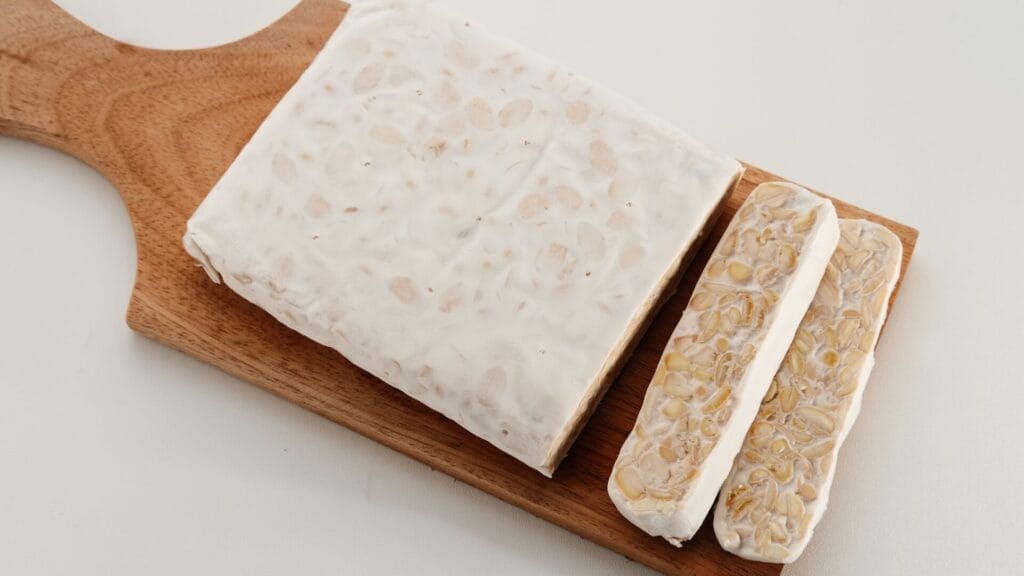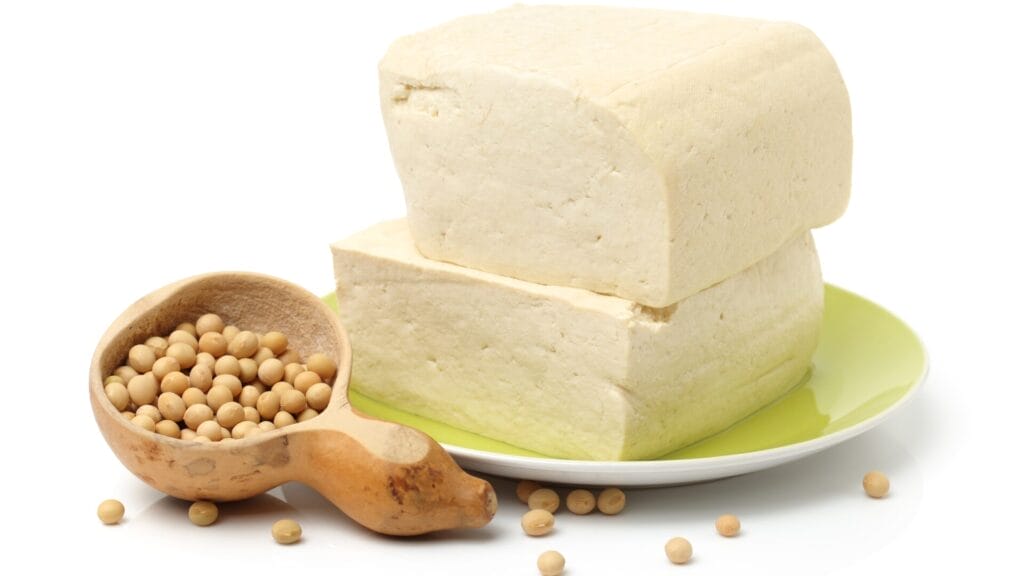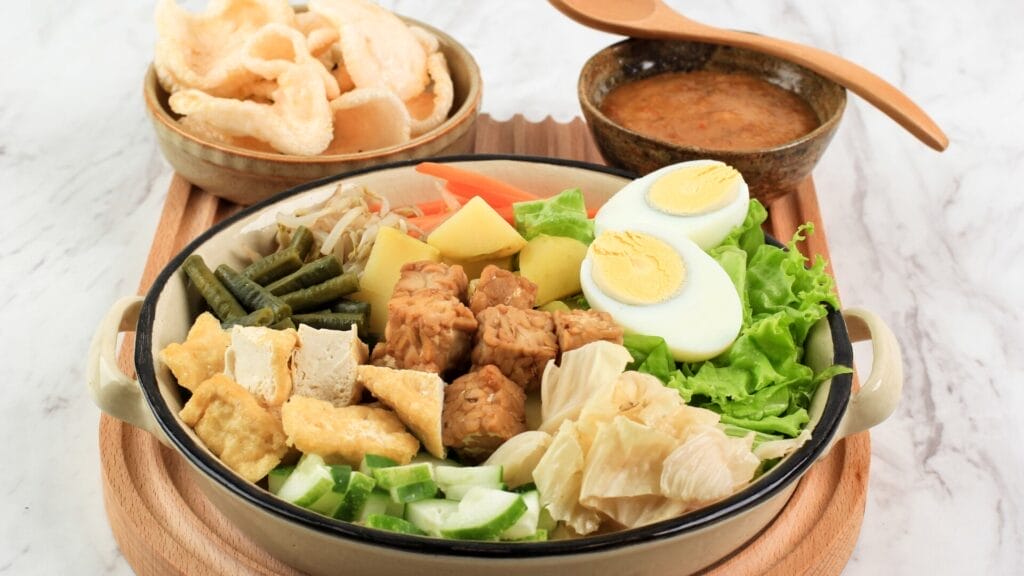Embarking on a fitness journey requires making thoughtful decisions about your diet. Two popular plant-based protein options are tempeh and tofu. These soy-based foods provide a wealth of nutrients that can help support muscle growth, recovery, and overall health. But when comparing tempeh vs tofu, how do they differ, and which is better suited for your personal fitness goals?
In this article, we’ll delve into the nutritional profiles, preparation methods, and fitness benefits of both tempeh and tofu, helping you determine which one is right for you. Whether you’re new to plant-based eating or simply looking to diversify your protein sources, this guide will give you everything you need to know.
Table of Contents
What is Tempeh?
Tempeh is a traditional Indonesian soy product made from fermented soybeans. It is created by fermenting cooked soybeans, which results in a firm, dense cake. One of the defining features of tempeh is its nutty, earthy flavor, and slightly chewy texture. This fermentation process also makes tempeh rich in probiotics, which can support gut health—a key aspect of overall wellness.

Nutritional Profile of Tempeh
Tempeh is packed with plant-based protein, making it an excellent option for those looking to boost their protein intake without consuming animal products. A typical 100-gram serving of tempeh contains:
- Calories: 195
- Protein: 19g
- Fat: 11g
- Carbohydrates: 9g
- Fiber: 5g
- Calcium: 9% of the daily value
- Iron: 15% of the daily value
Health Benefits of Tempeh
- Rich in Protein: Tempeh’s high protein content helps promote muscle repair and growth, which is crucial for anyone on a fitness journey.
- Probiotic Powerhouse: The fermentation process introduces beneficial bacteria that can enhance digestion and boost immune function.
- Good Source of Fiber: With 5 grams of fiber per serving, tempeh supports a healthy digestive system, helping you feel fuller for longer.
- Low Glycemic Index: Tempeh has a low glycemic index, meaning it doesn’t cause spikes in blood sugar, making it a stable source of energy for workouts.
Tempeh in Fitness Recipes
Tempeh is versatile and can be grilled, baked, stir-fried, or added to salads. Its firm texture holds up well in hearty dishes like stews or curries, making it a great addition to a post-workout meal that needs to be filling and nutritious.
One delicious recipe you can try is a Coconut, Tempeh, and Mushroom Curry, which is rich in flavor and provides a well-rounded balance of protein, healthy fats, and fiber. You can find the full recipe here: Coconut, Tempeh, and Mushroom Curry Recipe.

What is Tofu?
Tofu, also known as bean curd, is made by coagulating soy milk and pressing the resulting curds into blocks. It has a mild flavor and a smooth, soft texture. Tofu is a staple in many Asian cuisines and has become a go-to ingredient in vegetarian and vegan diets due to its versatility and protein content.
Nutritional Profile of Tofu
Tofu also provides a rich source of plant-based protein. A typical 100-gram serving of tofu contains:
- Calories: 144
- Protein: 15g
- Fat: 9g
- Carbohydrates: 3g
- Fiber: 2g
- Calcium: 20% of the daily value
- Iron: 9% of the daily value
Health Benefits of Tofu
- High in Protein: Like tempeh, tofu is an excellent source of protein that helps build and repair muscle tissue after exercise.
- Low in Calories: Tofu is lower in calories and fat compared to tempeh, making it a great choice for those looking to reduce their caloric intake while maintaining muscle mass.
- Rich in Calcium: Tofu is often fortified with calcium, supporting bone health—a critical factor for those engaging in weight-bearing exercises.
- Versatile in Cooking: Tofu easily absorbs the flavors of the ingredients it’s cooked with, making it suitable for a variety of dishes, from smoothies to stir-fries.
Tofu in Fitness Recipes
Tofu’s soft texture makes it ideal for a wide range of dishes, from scrambles and soups to baked or grilled main courses. It can be blended into smoothies for a quick protein boost or marinated and baked for a heartier meal.

Tempeh vs Tofu: Key Differences
While both tempeh and tofu offer impressive nutritional benefits, they do differ in key areas:
| Factor | Tempeh | Tofu |
|---|---|---|
| Texture | Firm, chewy | Soft, smooth |
| Flavor | Nutty, earthy | Mild, neutral |
| Protein Content | 19g per 100g | 15g per 100g |
| Probiotics | Yes (due to fermentation) | No |
| Calcium Content | Lower than tofu | Higher (often fortified) |
| Preparation | Best grilled, baked, or stir-fried | Works well in a variety of methods, including blending, frying, and baking |
Which is Better for Your Fitness Goals?
When deciding between tempeh and tofu, it ultimately comes down to your personal fitness goals and dietary preferences.
- For Muscle Gain: Tempeh’s higher protein content makes it slightly more advantageous for those looking to build muscle, though tofu is still an excellent source of protein.
- For Weight Loss: If your focus is on reducing calories while maintaining protein intake, tofu may be the better option due to its lower fat and calorie content.
- For Digestive Health: Tempeh’s probiotic benefits can be particularly helpful for supporting digestion and improving gut health, which can contribute to overall energy levels and performance.
- For Versatility: Tofu’s neutral flavor and soft texture make it the more versatile option in terms of recipes, particularly if you’re looking to incorporate it into smoothies or lighter dishes.
How to Incorporate Tempeh and Tofu into Your Fitness Diet
Incorporating both tempeh and tofu into your fitness diet can provide a range of benefits, allowing you to enjoy different textures and flavors while meeting your nutritional needs.

Tempeh Recipe Idea: Grilled Tempeh Salad
- Ingredients: Tempeh, mixed greens, avocado, cherry tomatoes, olive oil, lemon juice
- Instructions: Grill tempeh until crispy on the outside. Toss with mixed greens, avocado, and cherry tomatoes. Drizzle with olive oil and lemon juice for a protein-packed, post-workout meal.
Tofu Fitness Recipe Idea: Tofu Scramble
- Ingredients: Firm tofu, spinach, turmeric, bell peppers, olive oil
- Instructions: Crumble firm tofu in a pan with olive oil and turmeric. Add spinach and bell peppers, cooking until softened. Serve as a nutritious, protein-rich breakfast or post-workout snack.
Conclusion
In the debate of tempeh vs tofu, there is no one-size-fits-all answer. Both tempeh and tofu offer unique nutritional benefits that can support different fitness goals. Whether you prefer the firm, nutty texture of tempeh or the smooth, mild flavor of tofu, incorporating either (or both)
into your diet can be a great way to boost your plant-based protein intake and stay on track with your fitness journey.
For those looking to build muscle, tempeh’s higher protein content might be more beneficial, while those focusing on weight loss might appreciate tofu’s lower calorie count. The key is to experiment and find which works best for your personal fitness needs and taste preferences.
Don’t forget to try our delicious Coconut, Tempeh, and Mushroom Curry Recipe to start adding tempeh into your fitness diet today!
Frequently Asked Questions
What is tempeh made of?
Tempeh is primarily made from fermented soybeans. The fermentation process binds the soybeans into a firm cake-like structure, giving it a dense and chewy texture. Some tempeh may also contain added grains or seeds for flavor and texture variety.
Where to buy tempeh?
Tempeh can be found in most grocery stores, particularly in the health food or vegetarian sections. You can also find it in specialty organic markets, Asian grocery stores, or order it online from retailers specializing in plant-based products.
Is tempeh gluten-free?
Yes, traditional tempeh made from soybeans is naturally gluten-free. However, some tempeh varieties may include grains like barley or wheat, so it’s important to check the label if you’re following a gluten-free diet.
How to make tempeh?
Making tempeh at home involves fermenting soybeans with a tempeh starter culture. The process typically includes soaking and cooking the soybeans, then inoculating them with the culture and allowing the fermentation process to take place in a warm environment for 24-48 hours. The result is a firm, fermented soybean cake ready for cooking.
Is tempeh or tofu better for muscle building?
Both are excellent sources of plant-based protein, but tempeh has a slight edge with 19 grams of protein per 100 grams compared to tofu’s 15 grams.
Which is lower in calories, tempeh or tofu?
Tofu is generally lower in calories, making it a better option for those focused on weight loss or calorie control.







